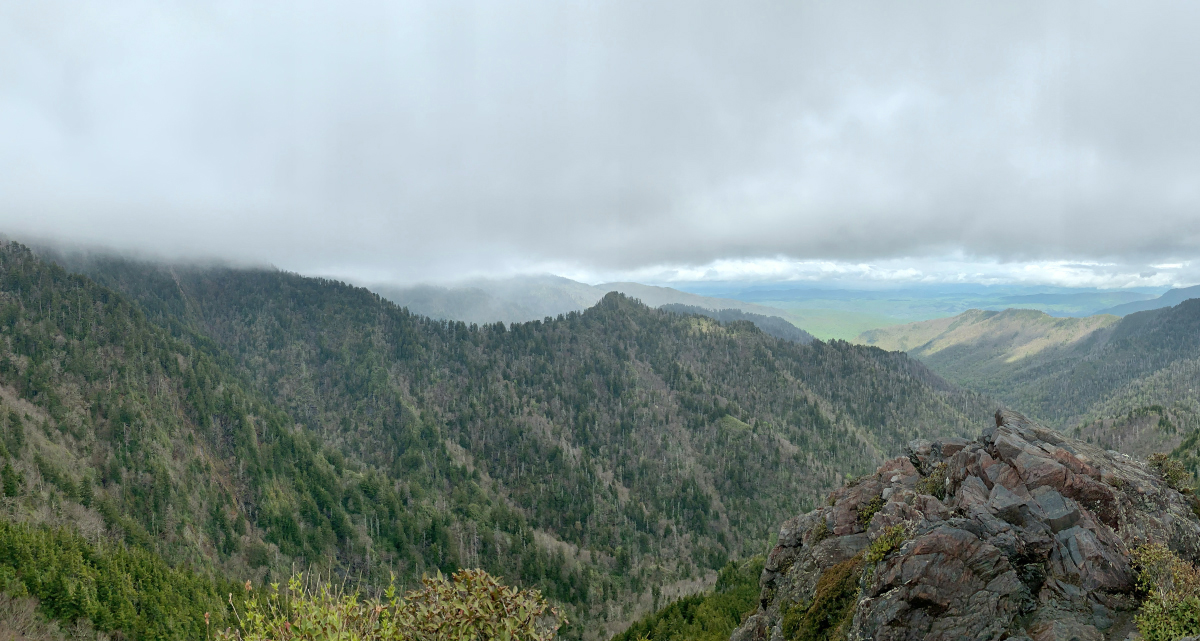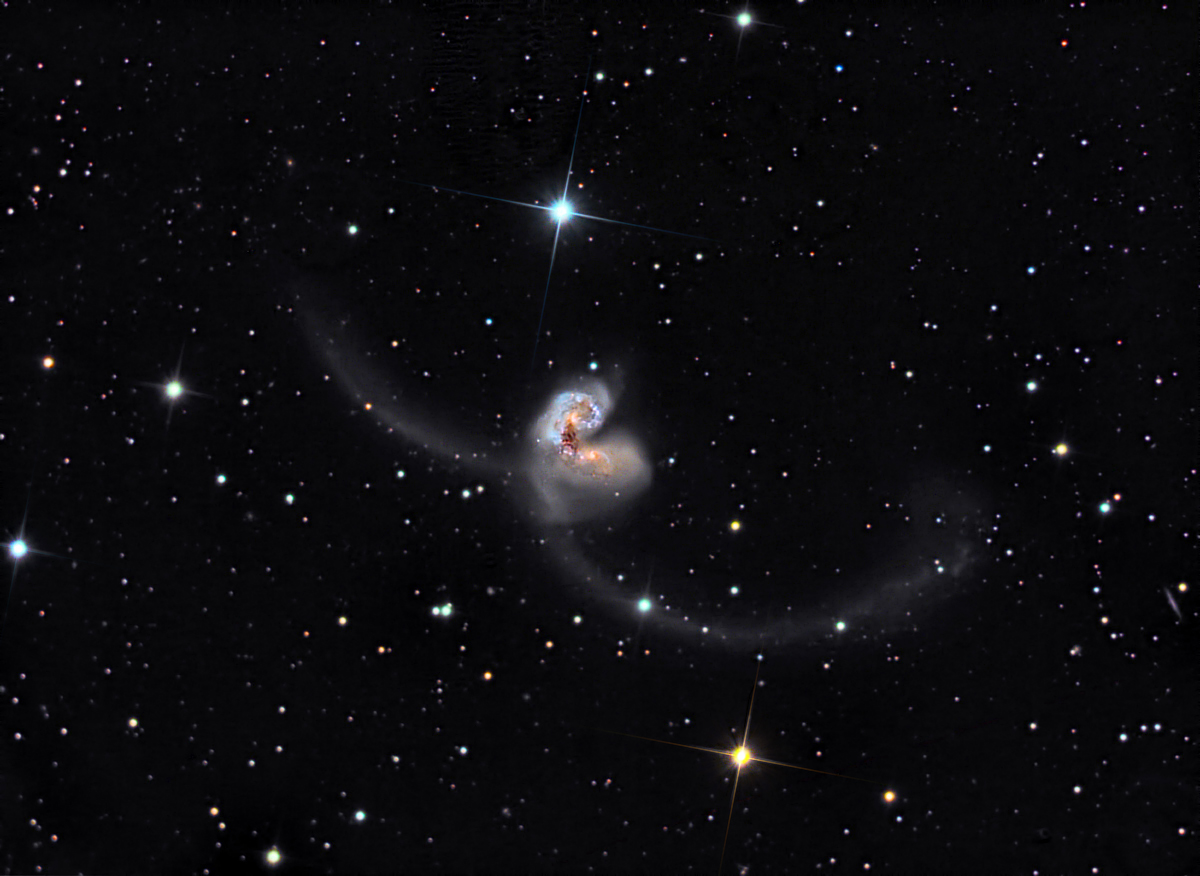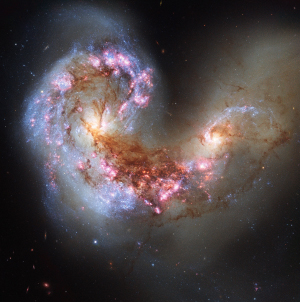The purpose of this feature is to give scout leaders, educators and naturalists an idea of some of the natural events coming up each month. We will try to cover a variety of natural events ranging from sky events to calling periods of amphibians, bird and mammal watching tips, prominent wildflowers and anything else that comes to mind. We will also note prominent constellations appearing over the eastern horizon at mid-evening each month for our area for those who would like to learn the constellations. If you have suggestions for other types of natural information you would like to see added to this calendar, let us know! Though we link book references to nationwide sources, we encourage you to support your local book store whenever possible.
Notes From May 2021 When I was in high school a friend and I hiked the Appalachian Trail from Fontana Dam to Newfound Gap. When I began hiking again in the Smokies a couple of years ago I decided it would be fun to complete all of the AT in the Smokies. Last year I completed the part of the trail from Low Gap to the northeast border of the park. and from Newfound Gap to Pecks Corner. To complete the rest would require a hike from Newfound Gap along the AT to its intersection with the Low Gap trail, and then a descent to the Cosby Campground, a distance of around 30 miles.
We seemed to be in two different worlds as we made our way to the shelter at Pecks Corner. At higher elevations we were in a dreamlike misty landscape. When we descended below the clouds we were greeted by sun-dappled vistas over the mountains. Conditions deteriorated later in the afternoon and at higher elevations we were exposed to a cold mist, mixed with sleet, that blew over the crest of the mountains. It crept into every opening of our rain gear and chilled us. By the time we reached the shelter at Pecks Corner we were ready to get the tent and hammock up and change into dry and warm clothes. I awoke the next morning to a nice dawn chorus of birds, including Black-throated Green and Black-throated Blue Warblers, Veerys and Red-breasted Nuthatches. The sun was back out as we hiked to the shelter at Tricorner Knob. We had beautiful views as we made our way around Mt. Sequoyah and Mt. Chapman. At the shelter elevation of 5,800 feet it was cold enough that I was awakened the following morning by pellets of sleet hitting the tent and bouncing down to the ground in small piles. The last leg of our hike was about 12 and a half miles, so we left early. We hiked around the Mt. Guyot. At 6,624 feet elevation, it's the second highest peak in the Smokies. Then it was on to Old Black, Camel Hump Knob and Cosby Knob. The last part of the hike was a fairly steep descent down the Low Gap trail to the Cosby Campground.
The veins on the leaves are quite distinct, and on the underside of the leaf they form a tree-like pattern. The showy white flowers that surround the flower cluster are sterile, and are thought to attract insects to the fertile flowers. Hobblebush flowers appear from mid to late May. The berries ripen in summer to fall and change color from green to red and purple. In May I imaged a pair of colliding galaxies in the constellation of Corvus the Crow, one of the nine constellations that are named after birds. Distance estimates for the pair range from 45 million light-years to around 65 million light-years.
It is thought that NGC 4038, the upper galaxy in this image, was originally a spiral galaxy and NGC 4039 was a barred spiral. Somewhere around 600 million years ago the two galaxies passed through the center of each other. The resulting two streamers of ejected dust and stars spans around 360,000 light-years. Bluish areas of the galaxy's cores represent young star clusters spawned by the collision. Stars are currently being formed in the pinkish areas. which are glowing hydrogen. Somewhere around 400 million years from now the two galaxies cores will merge to form a single core. Visually I've seen The Antennae in the 12.5 inch reflecting telescope used to make this image. They are somewhat mesmerizing! The cores of the two galaxies were surprisingly easy to see, but only the brightest parts of the tails were seen.
Sky Events for
June 2021: The June Solstice occurs at 11:32pm on the 20th, marking the longest day of the year in the Northern Hemisphere.
Jupiter and Saturn make a pretty pair in the early morning sky. Jupiter is in Aquarius while Saturn is above and to the right in Capricornus. Look for Jupiter about 40 degrees above the southeast horizon thirty minutes before sunrise. Saturn will be due south about 38 degrees above the horizon, high enough to give good telescopic views. On June 1st Jupiter will be about 5 degrees above a waning gibbous Moon. On June 10th, for those in Middle and East Tennessee, the Sun will rise with a small bite missing due to a partial solar eclipse. Take only fleeting glances with the naked eye and use an approved solar filter for any type of optical device. Otherwise you can permanently damage your eyes without even realizing it. You can also use a pinhole to project an image of the sun onto a white background. Evening Sky: Venus continues to dazzle in the western sky after sunset. If you have a relatively flat western horizon, look for Venus to be above and to the left of a very thin crescent Moon on June 11th. On June 13th, Mars will be about 3 degrees below the crescent Moon.Constellations:
New constellations this month in the eastern sky are Lyra, the Lyre, with its bright star Vega, Cygnus, the Swan, and Aquila, the Eagle. The bright stars Vega, Deneb and Altair form the "summer triangle." The galaxy Messier 106 hangs below the "Big Dipper" just over the border of Canes Venatici, the Hunting Dogs. Its bright core contrasts with its rather faint spiral arms. My notes show that it was not hard to see in my little 22 power, 60mm spotting scope. In a dark sky you should be able to see it as a very faint misty spot in binoculars. You will want to have either a good star chart or an app like Sky Safari to know where to look. Estimates place it at a distance of around 25 million light-years.
On Learning the Constellations: We advise learning a few constellations each month, and then following them through the seasons. Once you associate a particular constellation coming over the eastern horizon at a certain time of year, you may start thinking about it like an old friend, looking forward to its arrival each season. The stars in the evening scene above, for instance, will always be in the same place relative to the horizon at the same time and date each June. Of course, the planets do move slowly through the constellations, but with practice you will learn to identify them from their appearance. In particular, learn the brightest stars (like Altair and Vega in the above scene looking east), for they will guide you to the fainter stars. Once you can locate the more prominent constellations, you can "branch out" to other constellations around them. It may take you a little while to get a sense of scale, to translate what you see on the computer screen or what you see on the page of a book to what you see in the sky. Look for patterns, like the stars that make up the constellation Lyra. The earth's rotation causes the constellations to appear to move across the sky just as the sun and the moon appear to do. If you go outside earlier than the time shown on the charts, the constellations will be lower to the eastern horizon. If you observe later, they will have climbed higher. As each season progresses, the earth's motion around the sun causes the constellations to appear a little farther towards the west each night for any given time of night. If you want to see where the constellations in the above figures will be on July 15th at 10:30pm EDT, you can stay up till 12:30am EDT on June 16th and get a preview. The westward motion of the constellations is equivalent to two hours per month. Recommended: Sky & Telescope's Pocket Star Atlas is beautiful, compact star atlas. A good book to learn the constellations is Patterns in the Sky, by Hewitt-White. For sky watching tips, an inexpensive good guide is Secrets of Stargazing, by Becky Ramotowski.
A good general reference book on astronomy is the Peterson
Field Guide,
A Field Guide to the Stars and Planets, by Pasachoff. The book retails for around $14.00.
The Virtual Moon Atlas is a terrific way to learn the surface features of the Moon. And it's free software. You can download the Virtual Moon Atlas here. Apps: The Sky Safari 6 basic version is free and a great aid for the beginning stargazer. We really love the Sky Safari 6 Pro. Both are available for iOS and Android operating systems. There are three versions. The Pro is simply the best astronomy app we've ever seen. The description of the Pro version reads, "includes over 100 million stars, 3 million galaxies down to 18th magnitude, and 750,000 solar system objects; including every comet and asteroid ever discovered." A nother great app is the Photographer's Ephemeris. Great for finding sunrise, moonrise, sunset and moonset times and the precise place on the horizon that the event will occur. Invaluable not only for planning photographs, but also nice to plan an outing to watch the full moon rise. Available for both androids and iOS operating systems.
Amphibians:
Recommended: The Frogs and Toads of North America, Lang Elliott, Houghton Mifflin Co. Archives (Remember to use the back button on your browser, NOT the back button on the web page!) Natural Calendar February 2021 Natural Calendar December 2020 Natural Calendar November 2020 Natural Calendar September 2020 Natural Calendar February 2020 Natural Calendar December 2019 Natural Calendar November 2019 Natural Calendar September 2019 Natural Calendar February 2019 Natural Calendar December 2018 Natural Calendar November 2018 Natural Calendar February 2018 Natural Calendar December 2017 Natural Calendar November 2017 Natural Calendar October 2017Natural Calendar September 2017 Natural Calendar February 2017 Natural Calendar December 2016 Natural Calendar November 2016 Natural Calendar September 2016Natural Calendar February 2016 Natural Calendar December 2015 Natural Calendar November 2015 Natural Calendar September 2015 Natural Calendar November 2014 Natural Calendar September 2014 Natural Calendar September 2013 Natural Calendar December 2012 Natural Calendar November 2012 Natural Calendar September 2012 Natural Calendar February 2012 Natural Calendar December 2011 Natural Calendar November 2011 Natural Calendar September 2011 Natural Calendar December 2010 Natural Calendar November 2010 Natural Calendar September 2010 Natural Calendar February 2010 Natural Calendar December 2009 Natural Calendar November 2009 Natural Calendar September 2009 Natural Calendar February 2009 Natural Calendar December 2008 Natural Calendar November 2008 Natural Calendar September 2008 Natural Calendar February 2008 Natural Calendar December 2007 Natural Calendar November 2007 Natural Calendar September 2007 Natural Calendar February 2007 Natural Calendar December 2006 Natural Calendar November 2006 Natural Calendar September 2006 Natural Calendar February 2006
Natural Calendar December 2005
Natural Calendar November 2005
Natural Calendar September 2005
Natural Calendar February 2005
Natural Calendar December 2004
Natural Calendar November 2004
Natural Calendar September 2004
Natural Calendar February 2004
Natural Calendar December 2003
Natural Calendar November 2003 Natural Calendar February 2003 Natural Calendar December 2002 Natural Calendar November 2002 Nature Notes Archives: Nature Notes was a page we published in 2001 and 2002 containing our observations about everything from the northern lights display of November 2001 to frog and salamander egg masses. Night scenes prepared with The Sky Professional from Software Bisque All images and recordings © 2021 Leaps
|
|


 One
of the more interesting plants we encountered on our hike was Viburnum
lantanoides, commonly called Hobblebush. It's also called
Witch-Hobble. "Witch" in this case comes from the Middle English word
"withy", which means a strong and flexible branch. The "hobble" refers to
the ability of the sprawling branches to slow a traveler's progress.
One
of the more interesting plants we encountered on our hike was Viburnum
lantanoides, commonly called Hobblebush. It's also called
Witch-Hobble. "Witch" in this case comes from the Middle English word
"withy", which means a strong and flexible branch. The "hobble" refers to
the ability of the sprawling branches to slow a traveler's progress.






